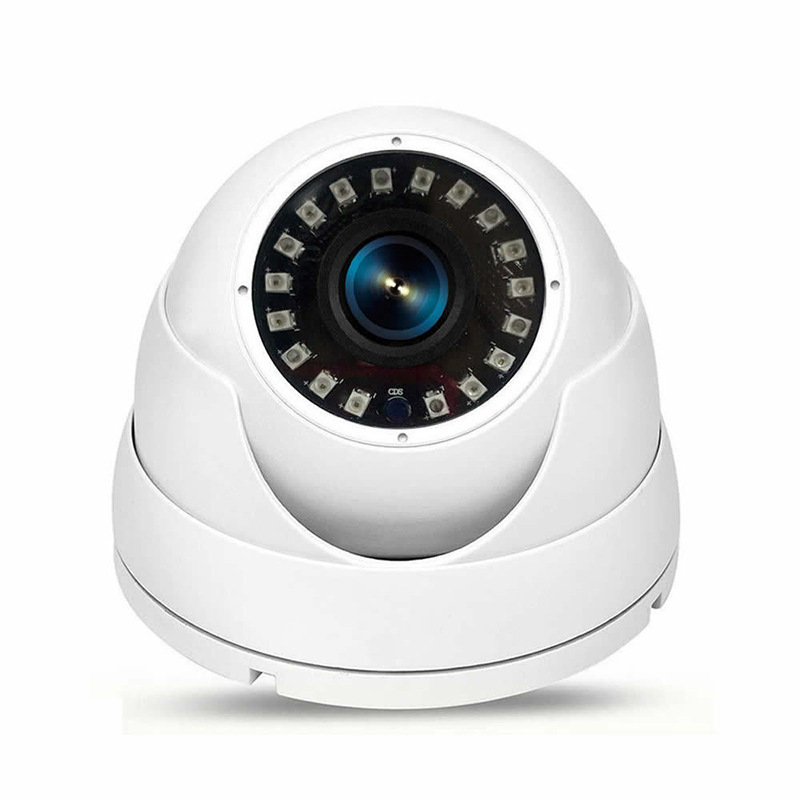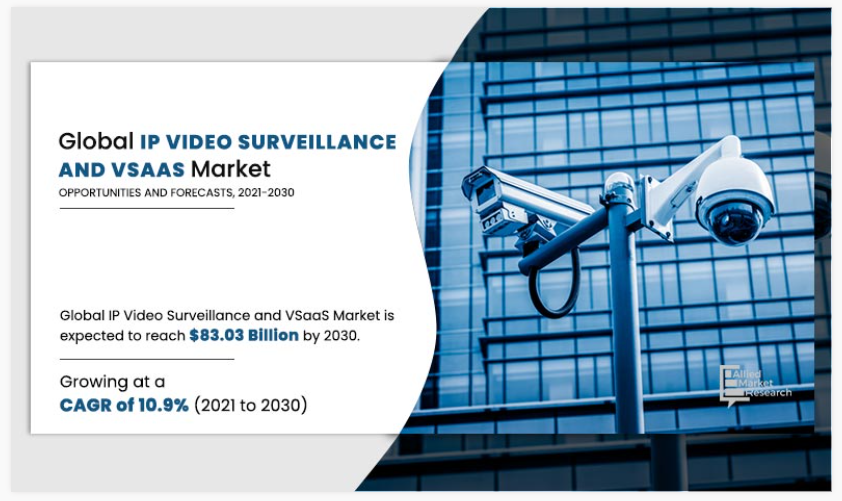How Far Can Dome Security Cameras See? Understanding Their Range & Capabilities

- Info and Tips
How Far Can Dome Security Cameras See? Understanding Their Range
Security cameras are everywhere—watching over homes, businesses, and public spaces. But how far can a dome security camera actually see?
If you’re setting up surveillance, you need to know its range to make sure it covers the right areas. The answer isn’t one-size-fits-all.
It depends on the lens, resolution, lighting, and even where you place it. In this guide, we’ll break down everything you need to know about the viewing distance of dome security cameras, so you can choose the right one for your needs.
Let’s get into it!
Factors Affecting the Range of Dome Security Cameras
The range of a dome security camera depends on several key factors, let’s discuss.
Camera Lens and Focal Length
The type of lens in a dome security camera plays a major role in determining how far it can see. Cameras with a fixed lens have a set field of view, which means they capture a consistent area but don’t allow zooming in or out. These are ideal for monitoring entry points, hallways, or small rooms where a wide-angle view is more important than zooming in on distant objects.
For more flexibility, varifocal lenses let you manually adjust the focal length to either widen the field of view or zoom in for more detail. A longer focal length results in a narrower but more focused view, allowing the camera to detect faces or license plates from farther away. Some high-end dome cameras also feature motorized zoom, which enables remote adjustments for better surveillance coverage.
Resolution and Image Clarity
Even if a dome security camera has a long-range lens, it won’t be effective if the image quality is poor. Resolution determines how much detail the camera captures, directly impacting its ability to identify faces, license plates, or small objects at a distance.
A 1080p dome security camera provides clear images for short to mid-range distances, typically up to 50-75 feet. However, for larger areas, a 4K dome camera offers four times the resolution of 1080p, making it ideal for long-range security. Higher resolution also allows for digital zooming without losing too much clarity, which is useful for forensic investigations or business security.
Night Vision and Infrared Capabilities
Most security threats occur at night, making night vision dome cameras essential for 24/7 surveillance. Many dome cameras use infrared (IR) LEDs to see in complete darkness. The range of these LEDs varies—some cameras only provide 30 feet of IR illumination, while others can reach 100 feet or more.
For areas with low lighting, starlight technology is another option. Instead of relying only on infrared, starlight sensors amplify ambient light to produce clearer images in dim conditions. If you need long-range security at night, investing in a dome camera with powerful IR LEDs or starlight technology will improve visibility and detail retention.
Weather and Environmental Factors
Even the best long-range security cameras can be affected by external conditions. Fog, heavy rain, snow, and even bright sunlight can interfere with image quality. Outdoor dome security cameras often come with weatherproof ratings like IP66 or IP67, ensuring they can withstand harsh environments without compromising performance.
Placement also matters. If obstacles like trees, walls, or fences are blocking the camera’s view, the actual monitoring range will be shorter than the camera’s technical capabilities. To get the best coverage, position dome cameras at elevated angles with a clear line of sight.
Typical Viewing Distances of Dome Security Cameras
Dome security cameras come in different ranges, designed to cover areas from small indoor spaces to large outdoor perimeters. Let’s talk about each type.
Short-Range Cameras (Up to 30 Feet)
Short-range dome security cameras are ideal for monitoring small areas like indoor spaces, office entrances, retail stores, and residential doorways. These cameras usually come with wide-angle lenses that capture more of the scene rather than focusing on distant details.
For short-range clarity, 1080p resolution or higher is recommended, ensuring that faces and objects within a 30-foot range remain recognizable. Infrared (IR) night vision is another key feature, helping these cameras capture clear footage even in low-light conditions. Some wide-angle security cameras also include AI motion detection and facial recognition, enhancing security in close-proximity surveillance.
Mid-Range Cameras (30–100 Feet)
For medium-sized areas such as hallways, parking lots, and retail spaces, mid-range dome security cameras provide the ideal balance between wide coverage and detail capture. These cameras typically feature varifocal lenses, allowing users to adjust the zoom and focus based on specific needs.
A 4MP or 4K dome camera is a great choice for mid-range distances, as higher resolution ensures clearer details when zooming in. Enhanced night vision, sometimes with smart IR technology, allows these cameras to maintain visibility across a larger area without overexposing nearby objects.
Other important specifications for mid-range cameras include weatherproofing (IP66 or IP67 ratings) for outdoor use, WDR (Wide Dynamic Range) to handle difficult lighting conditions, and motion tracking to follow moving objects within the camera’s field of view.
Long-Range Cameras (100+ Feet)
For large outdoor areas like industrial sites, highways, large parking lots, and perimeters, long-range dome security cameras provide extended surveillance with high-detail clarity. These cameras often feature motorized zoom lenses, allowing them to capture details at long distances while maintaining image sharpness.
A 4K long-range security camera with optical zoom can identify faces, license plates, or small objects at over 100 feet. Unlike digital zoom, which enlarges pixels and reduces clarity, optical zoom adjusts the lens for a sharper image. Starlight sensors and powerful IR LEDs further enhance night vision, ensuring clear footage even in complete darkness.
For businesses or high-security areas, PTZ (pan-tilt-zoom) dome cameras are a valuable upgrade. These cameras can move in multiple directions and zoom in on specific areas, providing real-time tracking of security events. When combined with AI-based motion detection and remote access, long-range dome cameras offer a highly effective security solution for large-scale monitoring.
Here’s How to Choose the Right Dome Security Camera for Your Needs

Selecting the best dome security camera depends on several factors, including the intended location, resolution, field of view, and whether you need indoor or outdoor functionality. With security threats on the rise, it’s no surprise that the global video surveillance market is projected to reach $83 billion by 2030, driven largely by the demand for versatile solutions like dome cameras. Their discreet design and wide-angle coverage make them a go-to choice for both residential and commercial security setups..
Identify Your Surveillance Requirements
Before purchasing a dome security camera, determine your coverage area and security goals. Are you monitoring a small indoor space, such as a home entryway or an office, or do you need surveillance for a larger outdoor area like a parking lot?
For indoor security, cameras with wide-angle lenses work well, offering broad coverage in confined spaces. Features like motion detection, two-way audio, and smart alerts are useful for home and office security.
For outdoor surveillance, durability is key. Look for weatherproof (IP66 or IP67-rated) dome cameras that can withstand harsh conditions. If monitoring at night is a priority, opt for a model with high-powered infrared (IR) night vision or starlight sensors for better low-light performance.
Compare Different Models and Brands
Understanding a camera’s specifications ensures you choose one that meets your security needs. Key factors to compare include resolution (1080p, 2K, or 4K), lens type (fixed or varifocal), and night vision range. A long-range security camera with optical zoom is ideal for large properties, while a wide-angle dome camera works better for monitoring entrances or hallways.
Customer reviews and expert recommendations can help narrow down your choices. Look for feedback on image clarity, ease of installation, and reliability. Well-known brands like Hikvision, Dahua, Arlo, and Reolink often provide high-quality options with remote access, AI motion detection, and cloud storage features.
Installation and Optimization Tips
Even the best dome security cameras won’t perform well if they aren’t installed correctly. Proper mounting and positioning ensure you get the best viewing range. Install cameras at higher angles to cover a wider area while avoiding obstructions like walls or trees.
To improve clarity, adjust settings such as brightness, contrast, and WDR (Wide Dynamic Range), especially if the camera faces bright light sources. Testing different viewing angles before final installation can help eliminate blind spots.
For outdoor security cameras, ensure they are placed in weatherproof enclosures if necessary, and check that night vision settings are optimized for the environment. Regular maintenance, like cleaning the lens and updating firmware, keeps your security system functioning efficiently.
Conclusion
Understanding how far a dome security camera can see is essential for choosing the right model for your needs. Factors like lens type, resolution, night vision, and environmental conditions all play a role in determining a camera’s effective range.
Whether you need a short-range dome camera for indoor monitoring, a mid-range security camera for parking lots and hallways, or a long-range dome camera with optical zoom for large outdoor spaces, selecting the right specifications ensures clear and reliable surveillance.
By identifying your coverage needs, comparing top-rated models, and optimizing installation, you can maximize your camera’s performance and improve security.
Frequently Asked Questions (FAQs)
1. How far can a 1080p dome security camera see?
A 1080p dome camera can typically capture clear images up to 50-75 feet, depending on the lens and lighting conditions. Higher-resolution cameras, like 4K dome cameras, provide better clarity at longer distances.
2. Do dome cameras have better range than bullet cameras?
Dome cameras are designed for discreet and wide-angle surveillance, while bullet cameras often have longer-range lenses. However, varifocal dome cameras with optical zoom can provide long-range coverage similar to bullet cameras.
3. What is the maximum zoom available in dome security cameras?
Some high-end PTZ dome cameras offer 20x to 30x optical zoom, allowing them to capture details from hundreds of feet away while maintaining image clarity.
4. Can dome security cameras see in total darkness?
Yes, night vision dome cameras use infrared (IR) LEDs or starlight sensors to see in complete darkness. The IR range varies, with some cameras illuminating up to 30 feet, while advanced models reach 100 feet or more.
5. How do I extend the range of my dome camera?
To improve range, choose a higher-resolution camera (4K or 5MP), use a varifocal or PTZ camera with optical zoom, and ensure proper placement with minimal obstructions.